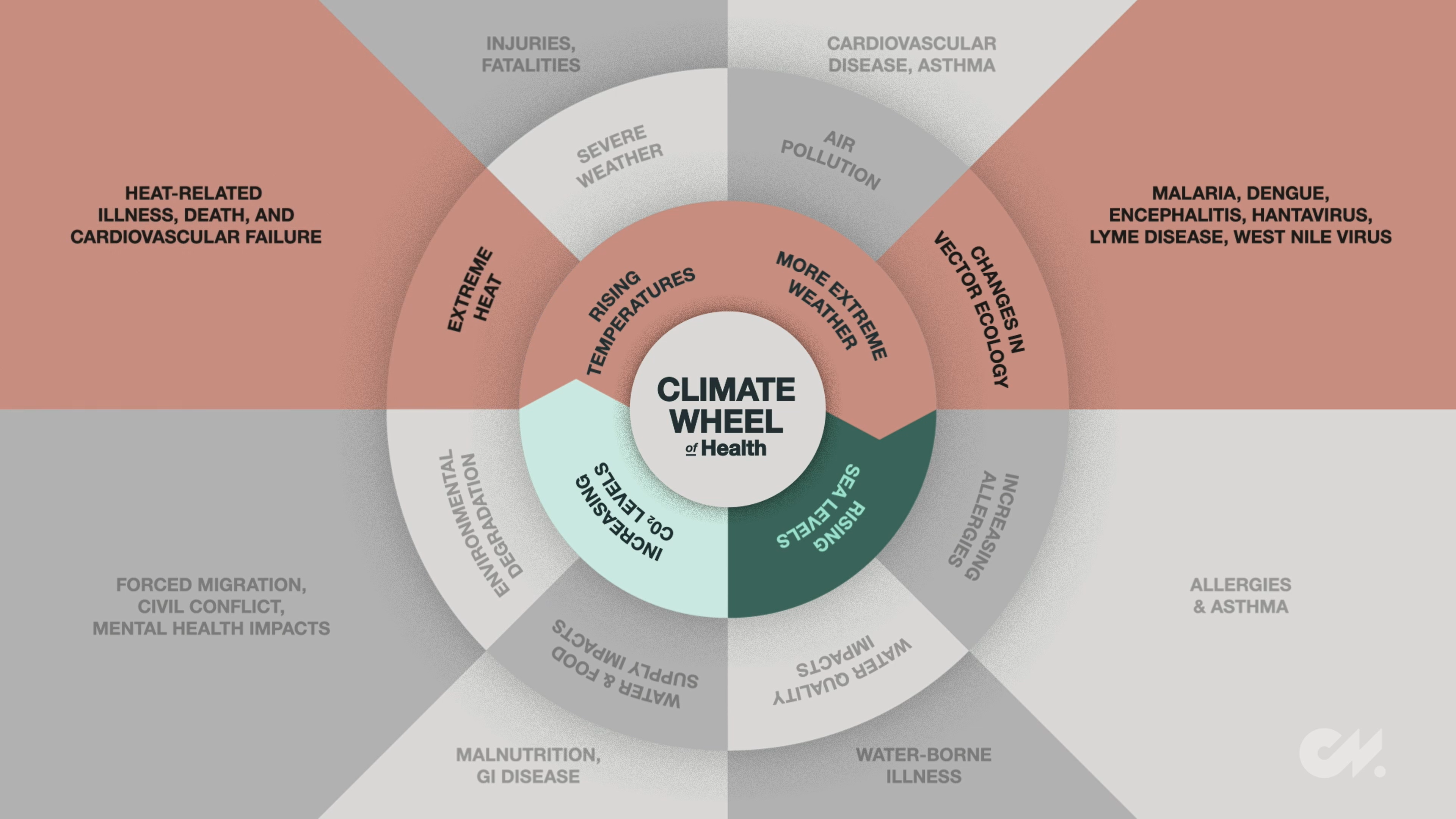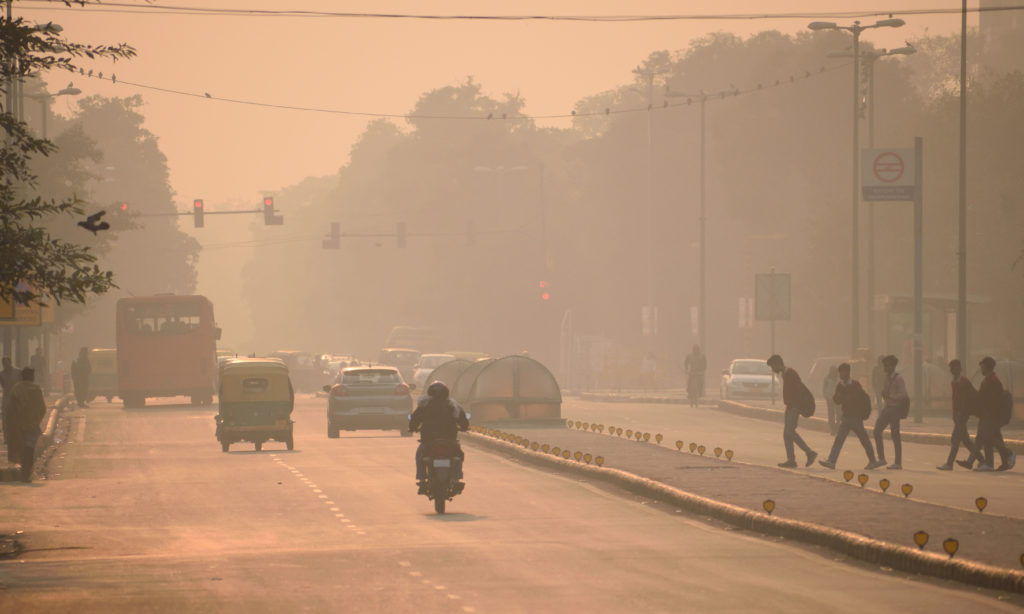Episode Transcript
So we know that global average temperatures are increasing as a result of greenhouse gases released by human activity. A key question is what the costs of these impacts will be and how well we can predict them. Certainly a changing climate has costs that are very hard, if not impossible to capture in dollar terms, it would be very challenging to put a dollar price on mass extinctions of plant and animal species or on the destruction of the great barrier reef. But it’s more straightforward to put a price tag on other impacts. For example, the loss of coastal properties due to sea level rise, or the loss of agricultural output, or human healthcare costs stemming from increased incidence of lung cancer or vector borne illness. In this episode, we’ll review current projections of costs across a number of key areas, human health, agriculture, sea level rise and extreme weather, labor and energy and migration. Ian Bolliger is a climate scientist with the Rhodium Group and Climate Impact Lab. And he provides a general framework for how he and his colleagues think about these costs.
Dr. Ian Bolliger:
The framework that I like to think about climate impacts, that’s a framework of, of risk. We don’t have all the answers. We don’t know exactly which places are going to warm by exactly how much and what that’s going to do to extreme weather, et cetera. But we have estimates of these things and we can take those estimates of how we understand what the changes are to the physical system, and then we can build on that with our understanding of how humans respond to these physical changes. And then we can combine those two pieces of understanding and start to get a sense of what the overall impacts might be, what the range of impacts is. There’s always going to be a range, but if we can work to quantify that range, we can start comparing it to other things that we care about in society. So how much are we willing to, to invest in trying to mitigate these impacts versus investing in all the other really important things that we need to do as a society?
So from a purely economic standpoint, if we can estimate the future costs of climate change, then we can determine how much we should be okay with paying today to avoid those costs.

Human Health
Heat waves, extreme weather, air pollution, and sea level rise, all come with their own set of health consequences [1]. Long-term exposure to air pollution increases cases of childhood asthma and cardiovascular disease in adults [2], rising temperatures and extreme weather increase the prevalence of vector-borne diseases like malaria and dengue [3], as well as deaths related to heat stress [4]. Globally, the monetized risk of mortality due to climate change is projected to be near $18 trillion in 2100 [5]. It is also critical to address the fact that the impacts of climate change on human health are not equally borne by all. In the United States, low income communities of color bear this burden much more heavily than wealthier white communities [6]. Black Americans for example, are 75% more likely than whites to live next to a polluting facility due to discriminatory practices like red-lining [7]. Though, these practices are no longer legal, there remains a clear pattern of placing polluting facilities like oil and gas refineries next to communities of low socioeconomic standing. As a result, these communities face increased risk of respiratory diseases and cancer [8,9,10].
Agriculture
How much will it cost to adjust agricultural practices to withstand the impacts of climate change and meet the nutritional demands of a growing global population? Farmers are by necessity, highly adaptive. The weather has never been constant, but as extreme weather events become the norm, it’ll be more difficult for them to adapt based on historical patterns. Scientists predict that by 2040, we will see approximately $19 billion in losses in crop production annually [11]. How do they arrive at this prediction?
Dr. Ian Bolliger:
So we look at the staple crops. We have data on what the yield of crops are in different regions. And we also have pretty good data on year to year how those temperatures are fluctuating in different regions. So we can actually see in the data, oh, in these areas crops are growing better, and in particularly warm years in this one country crops grew better or worse and aggregating all that data together from across numerous countries, and over time, we start to get an understanding of how crops exactly respond to different climates and that’s difficult in and of itself. But the really tricky part is to understand how farmers are going to adapt. If it becomes too warm to plant a certain crop, corn, the farmers, aren’t just going to keep planting corn and not getting anything out of it, people are going to adapt. And so trying to model that is sort of the next stage of the work that our group has been doing. That’s where you start to get into the real, kind of nuance, of these climate impact forecasts is when you talk about adaptation.
Sea Level Rise and Extreme Weather
Moving now to the cost of sea level rise and extreme weather. Sea level rise, according to the Climate Impact Lab is responsible for compounding the effects of other natural events like hurricanes and tropical storms. For example, the record 13.9 foot storm tide in New York Harbor during Superstorm Sandy was augmented by more than a foot due to climate-driven sea level rise [12]. As major weather events become the norm, costs will increase as well. And insurance companies will be one of the entities responsible for paying up. US Coastal property damages are expected to reach costs around $4-6 billion a year by 2039 due to climate related events [11]. These are just figures for the United States. Worldwide, it’s going to be much, much larger.
Labor and Energy
As a result of the increases in global average temperature, we are already beginning to see a deterioration in working conditions across industries that rely on both indoor and outdoor labor [13]. The cost of changes in labor productivity alone overshadow the impact of extreme weather and sea level rise with around 50 billion estimated damages by 2059 [11]. Additionally, energy costs are expected to rise with an increased demand for cooling systems and changes to urban infrastructure [14]. Though we may expect to see the demand for heating systems decrease, this will not be enough to offset the demand for air conditioning as the standard of living in developing countries rises. Total price tag, $30 billion by 2059 [11].
Migration
Human migration is often referred to as a second order cost of climate change and includes the cost from geopolitical conflict and the loss of livelihoods resulting from the mass movements of people fleeing climate impacted areas. According to the Institute for Economics and Peace, an estimated 1.2 billion people are at risk of displacement by 2050 [15]. This displacement has the potential to cause conflict both domestically and internationally.
If you’re wondering, is there a way to take all of these numbers and combine them into a single number that represents the costs of greenhouse gas emissions? The answer is yes. That number is called the social cost of carbon, and it’s the subject of one of our forthcoming episodes. For more information, and to listen to the full podcast with Ian Bolliger, go to our website, climatenow.com.
Sources
1. Climate Effects on Health. Centers for Disease Control and Prevention. Published March 2021, accessed March 24, 2021 from https://www.cdc.gov/climateandhealth/effects/default.htm#:~:text=The%20health%20effects%20of%20these,and%20threats%20to%20mental%20health.
2. Schraufnagel, D. et al. (2018) Air Pollution and Noncommunicable Diseases: A Review by the Forum of International Respiratory Societies’ Environmental Committee, Part 1: The Damaging Effects of Air Pollution. Chest Journal. 155(2), 409-416. https://doi.org/10.1016/j.chest.2018.10.042
3. Melillo, J., T.C. Richmond, and G.W. Yohe, Eds. (2014) Climate Change Impacts in the United States: The Third National Climate Assessment. U.S. Global Change Research Program, 841 pp. doi:10.7930/J0Z31WJ2.
4. Mora, C., B. Dousset, I. Caldwell et al. (2017) Global risk of deadly heat. Nature Clim Change 7, 501–506. https://doi.org/10.1038/nclimate3322
5. Carleton, T.A. et al. (2020) Valuing the Global Mortality Consequences of Climate Change Accounting for Adaptation Costs and Benefits. National Bureau of Economic Research. Working Paper 27599, DOI 10.3386/w27599. Note: These dollar values are displayed for communication purposes but were extrapolated from projected GDP in 2100 so there is a deal of uncertainty given GDP can be impacted by many factors.
6. Fleischman, L., M. Franklin (2017) Fumes Across the Fence-Line: The Health Impacts of Air Pollution from Oil and Gas Facilities on African American Communities. NAACP and Clean Air Task Force. Accessed March 25, 2021 from: https://www.naacp.org/wp-content/uploads/2017/11/Fumes-Across-the-Fence-Line_NAACP-and-CATF-Study.pdf
7. Orum, P. et al. (2014) Who’s in Danger? Race, Poverty, and Chemical Disasters. Environmental Justice and Health Alliance for Chemical Policy Reform. Accessed April 27, 2021 from https://comingcleaninc.org/assets/media/images/Reports/Who’s%20in%20Danger%20Report%20FINAL.pdf
8. Brown P (1995) Race, class, and environmental health: a review and systematization of the literature. Environ Res 69, 15–30.
9. Chakraborty J, Maantay JA, Brender JD (2011) Disproportionate proximity to environmental health hazards: methods, models, and measurement. Amer J Pub Health 101, S27–S36.
10. Mohai PM, Pellow D, Roberts TJ (2009) Environmental justice. Annu Rev Env Resour 34, 405–430
11. Rhodium Group, LLC., American Climate Prospectus: Economic Risks in the United States (New York: October 2014).
12. Coastal. Climate Impact Lab. Copyright 2021, accessed March 29, 2021 from http://www.impactlab.org/research-area/coastal/
13. Burke, M., S. Hsiang, E. Miguel (2015) Global non-linear effect of temperature on economic production. Nature 527, 235–239. https://doi.org/10.1038/nature15725
14. Barreca, A. et al. (2016) Adapting to Climate Change: The Remarkable Decline in the US Temperature-Mortality Relationship over the Twentieth Century. Journal of Political Economy 124(1) https://doi.org/10.1086/684582
15. Institute for Economics & Peace. Ecological Threat Register 2020: Understanding Ecological Threats, Resilience and Peace, Sydney, September 2020. Available from: http://visionofhumanity.org/reports (accessed 27 April 2021).





